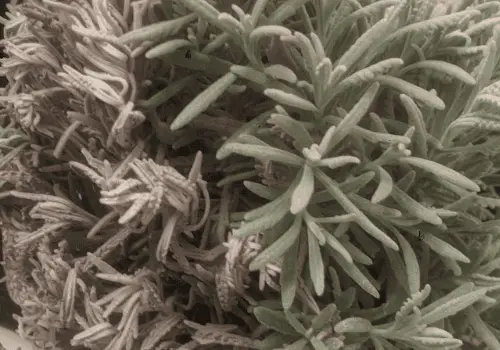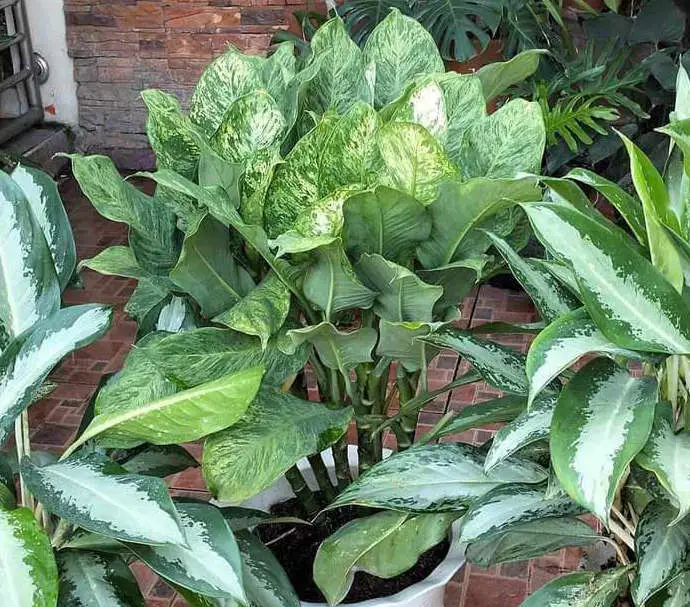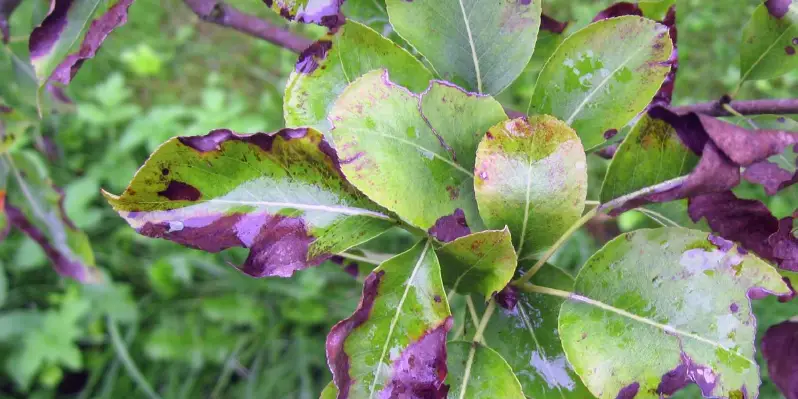Grey lavender is a common sight in gardens across the UK. But what does it mean when your lavender turns grey? And more importantly, what can you do to prevent it? In this blog post, we will explore the causes of lavender turning grey, and offer tips on how to keep your plants healthy and looking their best!
Why Is My Lavender Turning Grey?
Frost and fungus are the two most common causes of lavender turning grey. Frost damage can occur when the temperature dips below freezing, causing the leaves and stems of the plant to wither away. Fungal diseases such as botrytis can also cause lavender to turn grey, particularly if the plants are grown in wet or humid conditions.
Both of these cause grey lavender, but the exact coloring with vary depending on the cause and how long the plant has been damaged. for example, grey leaves from fungus tends to be splotchy, while frost damage is more likely to cause the entire plant to turn a uniform grey color.
How To Save Grey Lavender?
If your lavender is turning grey, the first step is to identify the cause. If it is due to frost damage, there is unfortunately not much you can do except wait for the plant to recover. However, if the problem is caused by a fungal disease, there are a few things you can do to try and save your plants. Let’s go through both scenarios in a little more detail.
Saving Grey Lavender from Frost Damage
As we mentioned, frost damage is one of the most common causes of lavender turning grey. This is because lavender is a Mediterranean plant, and therefore not used to the colder temperatures that we often get in the UK.
When the temperature drops below freezing, the water inside the lavender cells expands and bursts, causing the leaves and stems to wither away. This damage is usually irreversible, and the only thing you can do is wait for the plant to recover.

Saving Grey Lavending from Fungal Diseases
Fungal diseases such as botrytis can also cause lavender to turn grey. These diseases thrive in wet or humid conditions, and can quickly spread to other plants in the garden.
If you think your lavender might be infected with a fungal disease, it’s important to act quickly. The first step is to remove any affected parts of the plant, including any dead leaves or stems. You should then disinfect your tools and hands, to prevent the disease from spreading.
Next, you need to improve the drainage around your lavender plants. If they are grown in pots, make sure you use a well-draining potting mix and that the pots have drainage holes in the bottom. If they are planted in the ground, make sure the soil is not too compacted and that there is good drainage.
Finally, you can treat your plants with a fungicide. There are many different products available, so make sure you choose one that is suitable for use on lavender. Always follow the instructions on the packet, and be sure to apply the fungicide in the early morning or evening, when the temperature is cooler.
Preventing Lavender Turning Grey
The best way to prevent your lavender from turning grey is to take some proactive steps to protect it from the cold. If you live in an area that gets frost, consider planting your lavender in a pot so that you can easily move it indoors if the temperature drops. You can also cover plants with a frost cloth or fleece when the weather forecast predicts a cold snap.
Another way to prevent lavender from turning grey is to make sure it is not infected with a fungal disease. As we mentioned, these diseases thrive in wet or humid conditions, so it’s important to improve the drainage around your plants.
If you live in an area with high humidity, consider planting your lavender in a raised bed or on a slope, to improve the airflow around the plants. You can also treat your plants with a fungicide every few weeks, to prevent the disease from taking hold.
By following these simple tips, you can help keep your lavender plants healthy and looking their best! Grey lavender doesn’t have to be a problem in your garden – with a little care and attention, you can prevent it from happening.
Should Grey Lavender Be Pruned?
Deciding whether to prune a grey lavender plant is a tricky decision, as it depends on the cause of the problem. If the lavender is grey because of frost damage, then pruning will not help and may even make the problem worse.
However, if the lavender is grey because of a fungal disease, then pruning can help to prevent the disease from spreading. It’s important to remove any affected parts of the plant, including any dead leaves or stems. You should then disinfect your tools and hands, to prevent the disease from spreading.
Pruning can also help to improve the airflow around your lavender plants, which will help to prevent fungal disease from taking hold due to the high humidity.
Conclusion
As we have discussed, there are several reasons why lavender may turn grey. In most cases, the problem is due to frost damage or a fungal disease.
The good news is that both of these problems can be prevented with little care and attention. By taking some proactive steps, such as covering plants with a frost cloth or fleece when the temperature drops, you can help to prevent your lavender from turning grey.
If you think your lavender might be infected with a fungal disease, it’s important to act quickly to stop the disease from spreading. Remove any affected parts of the plant and disinfect your tools and hands. You should also improve the drainage around your plants, to prevent the disease from taking hold.
I hope this article has been helpful in understanding why lavender may turn grey. By following the tips above, you can help to prevent this problem from occurring in your garden. Thanks for reading!
Tim is an avid gardener from the UK. He was the founder of PlantCarer.com from 2021 to Sep 2023. He sold PlantCarer.com to Aaron. He has since started his own business called Seed To Supper, which provides new gardeners all the materials you need in a box (pots, seeds, compost and instructions) to grow your own delicious and nutritious vegetables and herbs from start to finish – no garden required.







0 Comments